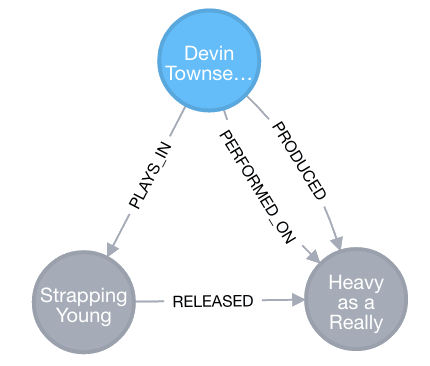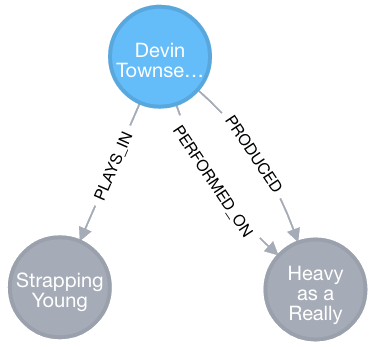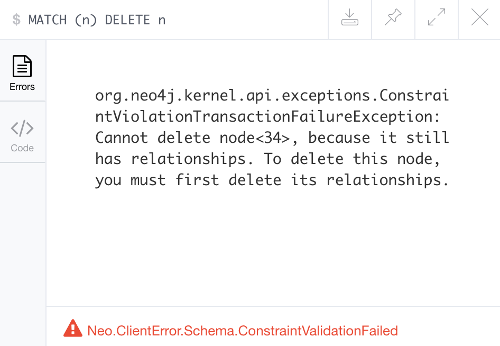Neo4j - Delete a Relationship using Cypher
You can delete relationships in the same way as deleting nodes — by matching the relationship/s you want to delete.
You can delete one or many relationships in one go. You can even delete all relationships in the database.
First, as a memory refresher, here are the relationships that we created earlier:

Let's delete the relationship of type RELEASED.
There are several ways we could go about this. Let's look at three.
The following statement is quite broad — it will delete all relationships of type RELEASED:
You could also be more specific and write something like this:
The above statement will match all Artist nodes that have a relationship type of RELEASED with an Album node.
You could be even more specific and do something like this:
Any of those statements will result in the RELEASED relationship being deleted. The graph will look like this:

Deleting Nodes with Relationships Attached
Nodes can't be deleted if they still have relationships attached to them.
If we try to run the following statement:
We will get the following error:

This is because that node has a relationship connected.
One option is to delete all relationships, then delete the node.
Another option is to use the DETACH DELETE clause. The DETACH DELETE clause lets you delete a node and all relationships connected to it.
So we can change the above statment to this:
Running that statement will result in the following success message:

Delete the Whole Database
You can take the DETACH DELETE a step further and delete the whole database.
Simply remove any filtering criteria and it will delete all nodes and all relationships.
Go ahead and execute the following statement:
We no longer have any data in the database... so I guess that's the end of the tutorial :)
If you're interested in learning more about working with Neo4j, check out the official Neo4j documentation.